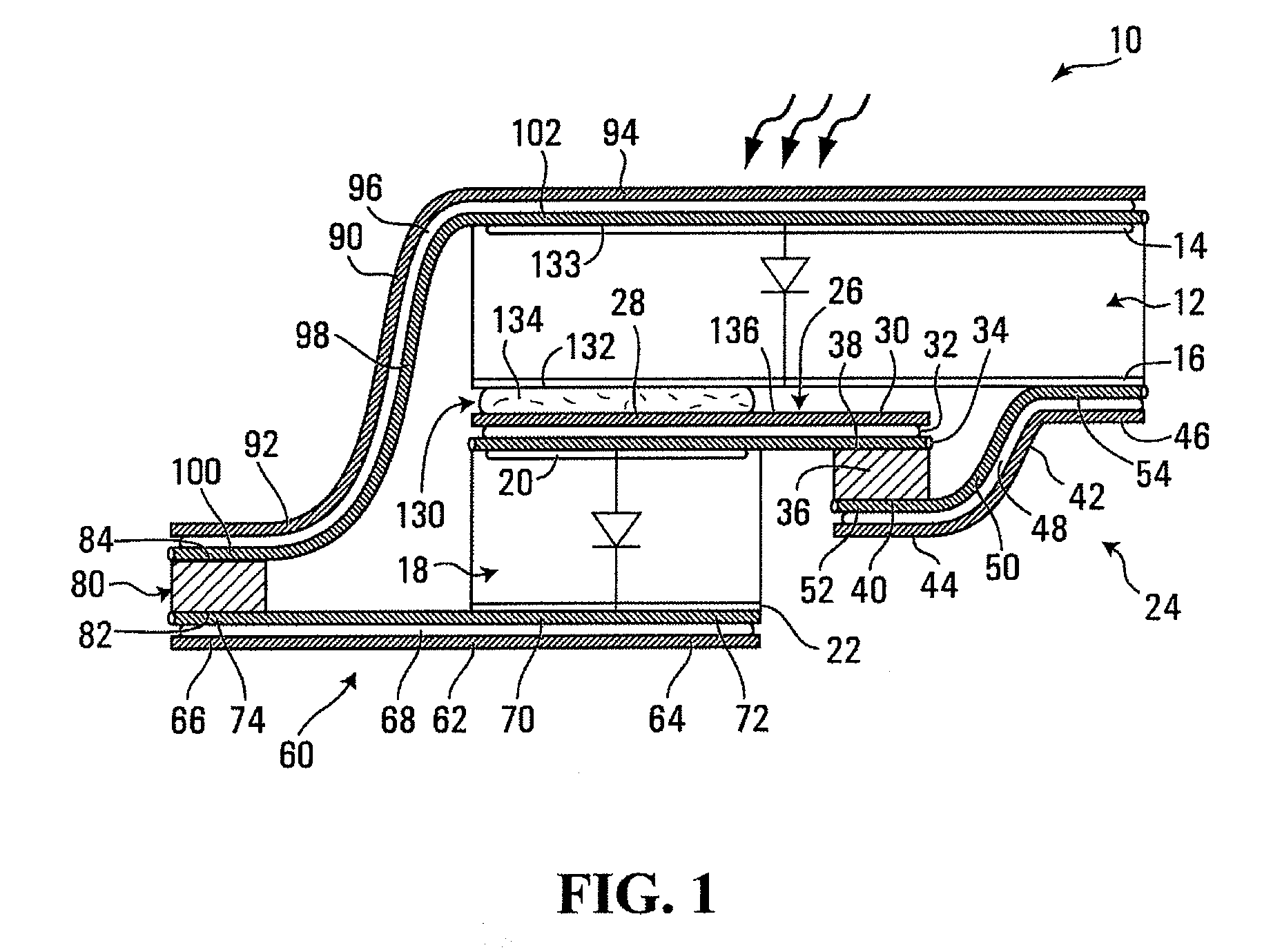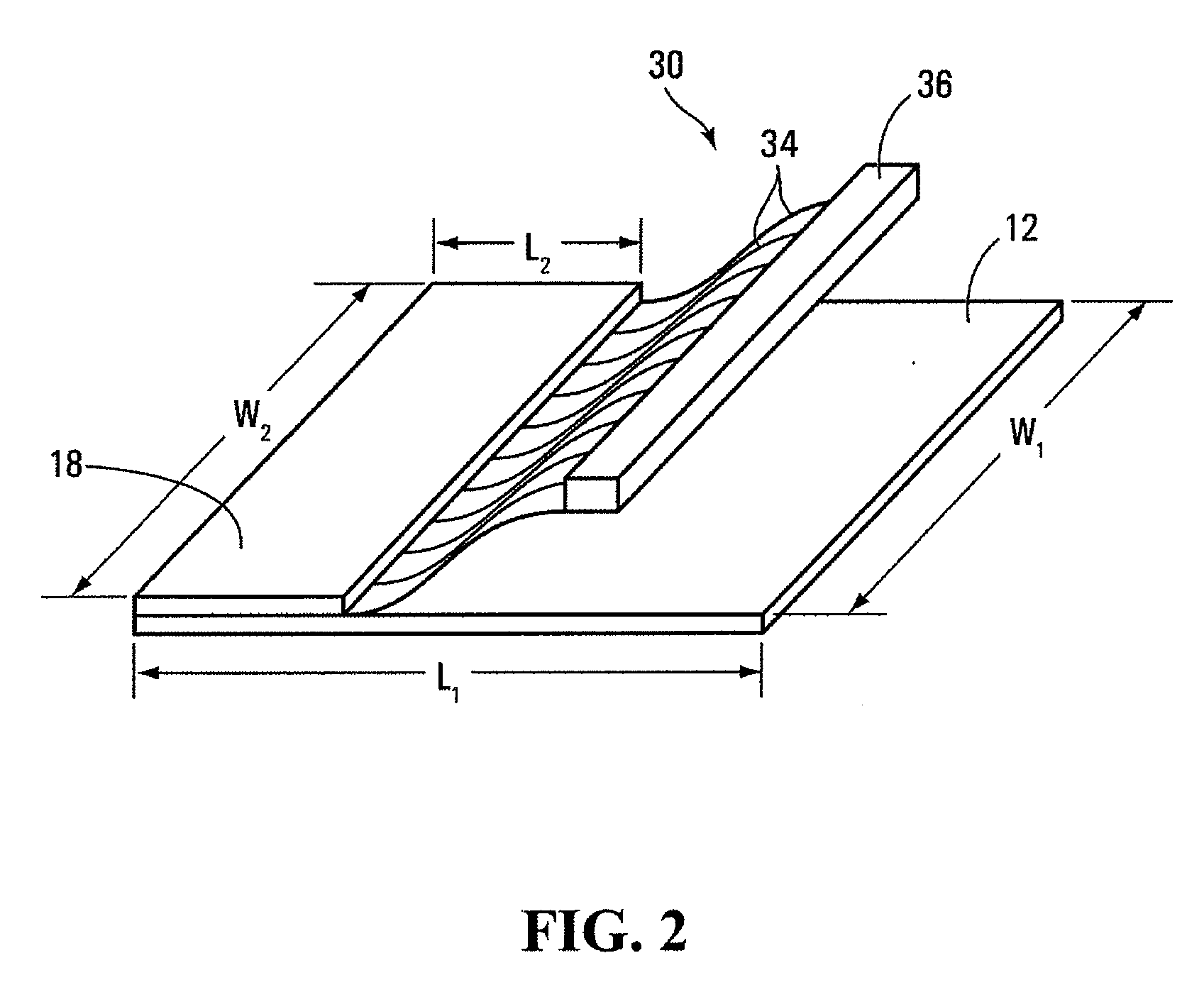Shading protection for solar cells and solar cell modules
- Summary
- Abstract
- Description
- Claims
- Application Information
AI Technical Summary
Benefits of technology
Problems solved by technology
Method used
Image
Examples
Embodiment Construction
[0075]Referring to FIG. 1, a shading protected solar cell apparatus for use in a solar cell system is shown generally at 10. The apparatus 10 includes a solar cell shown generally at 12 having a front side current collector 14 and a back side current collector 16. The front side current collector 14 may include a plurality of screen-printed metallized fingers (not shown) on the front surface of the solar cell 12 and the back side current collector 16 may include a screen printed aluminum metallization layer such as conventionally provided on silicon crystalline solar cells. The front side current collector may include transparent conductive coating such as InOx, SnOx or ZnOx or spattered or evaporated aluminum metallized patterns and the back side current collector may include laser fired contacts or spattered aluminum, or a transparent conductive coating such as InOx, SnOx or ZnOx.
[0076]The apparatus 10 further includes a bypass diode shown generally at 18 disposed closely adjacent...
PUM
 Login to View More
Login to View More Abstract
Description
Claims
Application Information
 Login to View More
Login to View More - R&D
- Intellectual Property
- Life Sciences
- Materials
- Tech Scout
- Unparalleled Data Quality
- Higher Quality Content
- 60% Fewer Hallucinations
Browse by: Latest US Patents, China's latest patents, Technical Efficacy Thesaurus, Application Domain, Technology Topic, Popular Technical Reports.
© 2025 PatSnap. All rights reserved.Legal|Privacy policy|Modern Slavery Act Transparency Statement|Sitemap|About US| Contact US: help@patsnap.com



